Suppose I have these records:
Code |GroupLevel |Group
-----------------------------------
X0000 |4 |
X1000 |3 |X0000
X2000 |3 |X0000
X3000 |3 |X0000
X1100 |2 |X1000
X1200 |2 |X1000
X1300 |2 |X1000
X2100 |2 |X2000
X2200 |2 |X2000
X2300 |2 |X2000
X1110 |1 |X1100
X1120 |1 |X1100
X1111 |0 |X1110
X1112 |0 |X1110
X1113 |0 |X1110
X1114 |0 |X1110
What I want to acheive is to have this kind of sequence number:
Seq |Code |GroupLevel |Group
-------------------------------------
1 |X0000 |4 |
2 |X1000 |3 |X0000
3 |X1100 |2 |X1000
4 |X1110 |1 |X1100
5 |X1111 |0 |X1110
6 |X1112 |0 |X1110
7 |X1113 |0 |X1110
8 |X1114 |0 |X1110
9 |X1120 |1 |X1100
10 |X1200 |2 |X1000
11 |X1300 |2 |X1000
12 |X2000 |3 |X0000
13 |X2100 |2 |X2000
14 |X2200 |2 |X2000
15 |X2300 |2 |X2000
16 |X3000 |3 |X0000
I tried something with fixed group level (3) but not if the group level > 5.
Here's what I did:
List<MySequenceModel> _lstPair = new List<MySequenceModel>();
var _lst = _records.Where(x => x.GroupLevel == 3).ToList();
foreach (var item in _lst)
{
if (_lstPair.Where(x => x.Code.Equals(item.Code)).FirstOrDefault() == null)
_lstPair.Add(new MySequenceModel { Code = item.Code, SeqNo = _seqCounter++ });
var _lst2 = _records.Where(x => x.Group.Equals(item.Code) && !x.Code.Equals(item.Code)).OrderBy(x => x.Code).ToList();
foreach (var _item2 in _lst2)
{
if (_lstPair.Where(x => x.Code.Equals(_item2.Code)).FirstOrDefault() == null)
_lstPair.Add(new MySequenceModel { Code = _item2.Code, SeqNo = _seqCounter++ });
var _lst3 = _records.Where(x => x.Group.Equals(_item2.Code) && !x.Code.Equals(_item2.Code)).OrderBy(x => x.Code).ToList();
foreach (var _item3 in _lst3)
{
if (_lstPair.Where(x => x.Code.Equals(_item3.Code)).FirstOrDefault() == null)
_lstPair.Add(new MySequenceModel { Code = _item3.Code, SeqNo = _seqCounter++ });
var _lst4 = _records.Where(x => x.Group.Equals(_item3.Code) && !x.Code.Equals(_item3.Code)).OrderBy(x => x.Code).ToList();
foreach (var _item4 in _lst4)
{
if (_lstPair.Where(x => x.Code.Equals(_item4.Code)).FirstOrDefault() == null)
_lstPair.Add(new MySequenceModel { Code = _item4.Code, SeqNo = _seqCounter++ });
}
}
}
}
MySequenceModel is a class that has the code and the sequence number which is essentially needed for reporting. A pseudo code will do.
TIA
